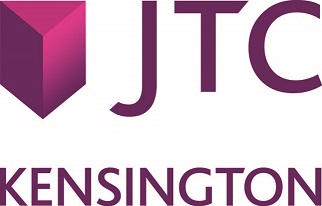Singapore: Navigating IRAS Tax Act Section 10L and its impact on foreign asset sales
In the ever-evolving landscape of corporate taxation, IRAS is introducing a new Section 10L. This development, set to reshape how entities approach gains from movable or immovable property situated outside Singapore (“foreign asset”).
What does Section 10L mean for your business?
When these gains are received in Singapore from outside Singapore, they fall under the tax umbrella. This change prompts many entities to reevaluate their tax planning, particularly those with international investments.
Who is affected by Section 10L?
Section 10L applies only to gains from a sale or disposal of a foreign asset that occurs on or after 1 January 2024 and only applies if –
- the gains would not otherwise be chargeable to tax as income; or
- the gains would otherwise be exempt from tax under the Income Tax Act.
Which entities are included in Section 10L?
Entities holding a controlling interest in a foreign asset, also known as the investee, are included.
“Controlling interest” is defined as having power over the investee; exposure, or rights, to variable returns from involvement with the investee and the ability to use power over the investee to affect the amount of those returns.
What type of entity does Section 10L exclude?
A pure equity-holding entity that hold shares or equity interests in any other entity (without controlling interest over its foreign assets) that fulfils these conditions:
- It submits returns, statements, or accounts to the public authority;
- Its operations are managed and performed in Singapore;
- It has adequate human resources and premises in Singapore to carry out its operations.
A non-pure equity-holding entity (without controlling interest over its foreign assets) that fulfils these conditions:
- Its operations are managed and performed in Singapore;
- It has adequate economic substance in Singapore as evidenced by:
- the number of full-time employees of the entity (or other persons managing or performing entity’s operations) in Singapore;
- the qualifications and experience of such employees or other persons;
- the amount of business expenditure incurred by the entity in respect of its operations in Singapore;
- whether the key business decisions of the entity are made by persons in Singapore.
What are the exceptions to Section 10L?
Section 10L excludes the specified percentage of gains from selling or disposing of qualifying intellectual property rights, as defined in Section 43X(13), received in Singapore from abroad. This applies only to a specific portion of the profits that would have been taxed at a lower rate under certain conditions outlined in Section 43X (Concessionary rate of tax for intellectual property income).
Section 10L does not apply to profits from selling foreign assets (not intellectual property) if the sale is part of a financial institution’s business or an entity’s operations. This is valid if the entity’s income is either tax-exempt or taxed at a lower rate under specific sections of the law, or if the entity is excluded from certain tax rules during the period of the sale.
How are gains and deductions handled?
Gains from selling or disposing of foreign assets are considered as earned in Singapore if:
- any amount from such gains that is remitted to, or transmitted or brought into Singapore;
- any amount from such gains that is applied in or towards satisfaction of any debt incurred in respect of a trade or business carried on in Singapore;
- any amount from such gains that is applied to the purchase of any movable property which is brought into Singapore.
If the asset is sold for less than its market value, the Comptroller may calculate the taxable gains as follows:
A + B – C; where –
- A is the amount of the gains actually received in Singapore from outside Singapore;
- B is the open-market price for the foreign asset; and
- C is the actual price for the sale or disposal of the foreign asset.
The open-market price for a foreign asset is either –
- the price which the foreign asset could have been sold for in the open market on the date of its sale or disposal; or
- where the Comptroller is satisfied by reason of the special nature of the foreign asset that it is not practicable to determine the price mentioned in paragraph (a), such other value as appears to the Comptroller to be reasonable in the circumstances.
Under Section 10L, when calculating the taxable gains, the seller entity may deduct the following expenditure from the gains:
- any expenditure incurred by the seller entity to acquire, create or improve the foreign asset;
- any loss incurred by the seller entity from the sale or disposal of any other foreign asset.
Where not all the gains from the sale or disposal of a foreign asset are received in Singapore in the same basis period, a portion of the amount deductible as the Comptroller considers reasonable is deductible for each basis period in which any such gains are received in Singapore.
Act Now: Consult Your Tax Advisor
It is crucial for entities with foreign assets to understand the full implications of Section 10L before 1 January 2024.
We encourage you to speak with your tax advisor now. Expert guidance will ensure compliance and strategic benefit under the new tax law. This proactive step secures peace of mind in Singapore’s corporate taxation landscape.
